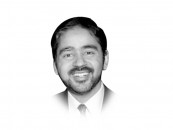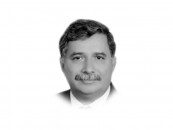India's double game with US
US and its allies continue to advance this narrative that China

At the turn of the century, it became abundantly clear that China was on its way to dethrone the US as the world's sole superpower. No superpower would let its adversary take its place easily. The US has long portrayed itself as a leader of the "free world" and considers the rise of China as a threat to the "rule based order".
The US and its allies continue to advance this narrative that China, as a superpower, would be a disaster for the "free world". In order to contain China, the US decided to cozy up with India. For so long India maintained a non-aligned posture but leaned toward the Soviet Union. The US-India ties remained lukewarm. Relations between the two countries soured after India conducted nuclear tests in 1998, prompting US sanctions. However, in the early 2000s a strategic rethinking began in Washington. With China's rise looming large, the US saw India as a natural democratic counterweight in Asia.
The big reset happened during President Bush's second term. His administration made a bold bet, integrating India into the global nuclear order despite its non-signatory status regarding NPT. The landmark US-India Civil Nuclear Deal in 2008 became the cornerstone of the new partnership. The US believed a strong India could help balance China's growing influence in the Indo-Pacific region. There was bipartisan consensus in the US about deepening ties with India.
After the Bush administration, Democrat leader President Barack Obama continued to pursue strategic partnership. In fact, the relationship between the US and India was taken to the next level. A number of agreements, signed between the two sides over the next two decades, left no ambiguity that India had finally abandoned its non-aligned posture. Some of the agreements include 2016 Logistics Exchange Memorandum of Agreement (enabling mutual use of military bases for refueling and logistics); 2018 Communications Compatibility and Security Agreement (allowing India to access encrypted US military communication equipment); and 2020 Basic Exchange and Cooperation Agreement (allowing shared geospatial intelligence and satellite data for defense targeting). India, which for long procured military hardware from Russia, began to buy defence equipment from the US, like Apache helicopters, P-81 surveillance aircraft, C-130/C 17 transport planes and MH-60R naval choppers. The current US Secretary of State Marco Rubio a few years ago introduced a bill in the Congress, seeking a status for India similar to the one being enjoyed by Israel.
The sole purpose of the US warming up to India was to make sure India's support of US endeavours to contain China. But despite the deepening ties, US policymakers and analysts are increasingly disillusioned with India on several fronts. While India continued to take advantage of its strategic partnership with the US, it also maintained close ties with Russia.
But the return of President Trump to the White House changed everything. Trump is no longer ready to tolerate India's pursuit of strategic autonomy. Rubio admitted that Indian ties with Russia were a source of "irritation" in the relationship. India continues to buy discounted oil and military hardware from Russia. The Trump Administration insists that India is funding Russia's war against Ukraine through these purchases. India is part of Quad, but resists any formal military alliance or joint patrolling. No appetite to take a strong anti-China stance that would resemble US expectations.
The four-day military conflict in May between Pakistan and India also changed the equation. Pakistan's response to the Indian missile strikes shook the western world and the US. There were murmurs in Washington and other western capitals about the Indian military capabilities after its defeat at the hands of Pakistan. But above all, there is a growing realisation in Washington that India is playing a double game — taking full advantage from the US but not ready to align its strategic goals with Washington. India may remain an important player for the US but the relationship may never be the same again.





1729685382-0/Untitled-design-(57)1729685382-0-208x130.webp)











COMMENTS
Comments are moderated and generally will be posted if they are on-topic and not abusive.
For more information, please see our Comments FAQ